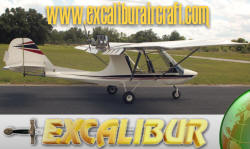|
.... or you can paint the prop tips of your prop a
bonny fluorescent yellow like mine, or plain white if you don't
want to be too garish. I'm told mine is very visible from
behind. The key is to
put lots of very light coats so that at any one time there is not
too much solvent having a go at the prop.
Use masking tape to get
a neat finish, and do it when you are about to change the prop
tape. Also use a plastic primer (white) as used on car bumpers.
I think these are acrylic based which means the carrier might well
be water. If so then this should not affect your prop at all. If
the fluorescent paint is acrylic too, then all the better.
I find the easiest way to do the prop painting is to leave it
on the plane and spray one tip lightly, then rotate it a quarter
turn and do the next. By the time you have done the fourth tip,
the first is dry and ready to receive the next light coat.
Follow-up:
Guy Gratton (Chief Technical Officer of BMAA) saw the feature
and kindly sent some research done by the RAF on prop visibility.
You wouldn't thank me for reprinting the RAF version here - it's a
cross between policeman and scientist speak, but in summary it
deals with:
- The colour combinations that you should and shouldn't use
for maximum contrast (satin black and satin white are best, but
fluorescent yellow is better in snowy conditions)
- How to paint the bands - concentric circles of around 5
inches depth
- How to make the tip flicker (inset one tip's white band by
10mm)
- Which surfaces to paint (don't paint the back if it's a
tractor prop and in your field of vision)
The above courtesy of
Durham Microlights
|

